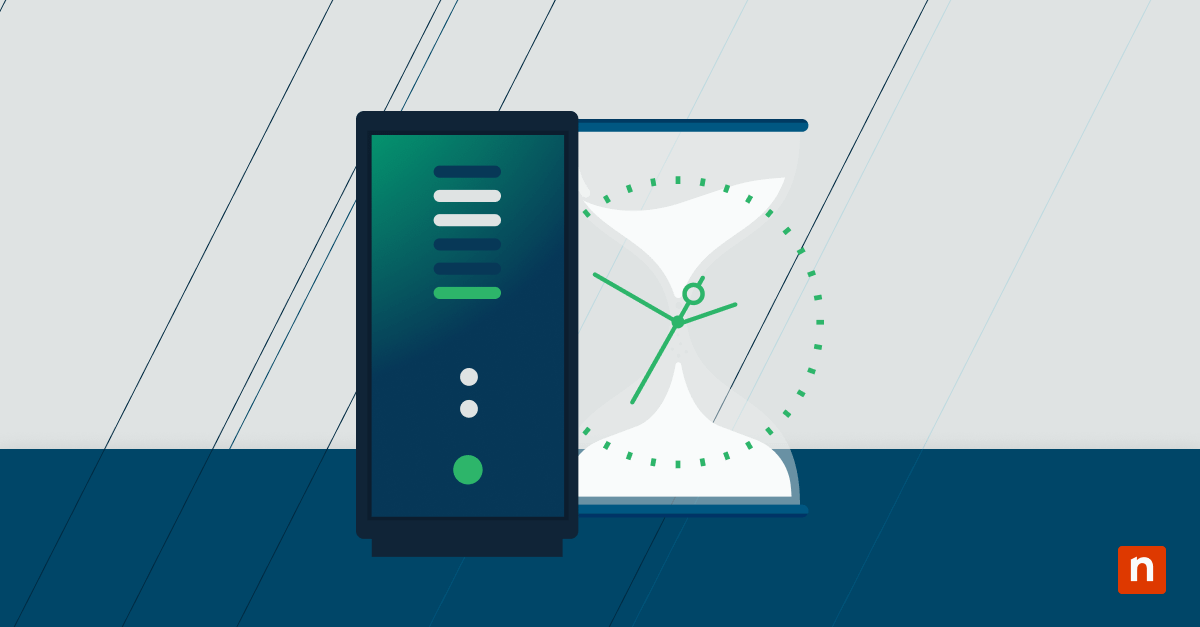A remote wipe is a security function that allows IT teams to erase data from a device without physical access, effectively restoring it to factory settings or a secure baseline. This capability is crucial in IT security because it prevents unauthorized access to sensitive information stored on devices that may be lost, stolen, or compromised. By enabling the immediate removal of data, remote wipes help protect against potential security breaches that could have severe implications for an organization, including financial loss, reputational damage, and legal consequences.
This article aims to educate IT teams and decision-makers on the critical scenarios where a remote wipe is necessary. It will provide insights into why remote wipes are essential, discuss the consequences of not acting decisively, and outline best practices for implementing remote wipes securely and efficiently.
What is a remote wipe?
Remote wipe technology is a critical component of modern IT security strategies. It operates by sending a command over a network to a device instructing it to erase all data, thereby preventing unauthorized access to sensitive information. Within the context of data protection and device management, remote wipe serves as a last line of defense when other security measures have failed or been circumvented. It is essential for safeguarding sensitive information across a range of devices, including smartphones, tablets, laptops, and even servers.
The underlying technology behind remote wipe solutions integrates seamlessly with device management systems. These systems, such as Mobile Device Management (MDM) and Enterprise Mobility Management (EMM) platforms, allow IT teams to monitor, manage, and secure devices across the organization. Remote wipe commands are executed through these platforms, leveraging secure communication protocols and authentication mechanisms to ensure that only authorized personnel can initiate a wipe. This integration enables IT teams to execute remote wipes on various devices remotely and securely, providing a critical tool in the organization’s security arsenal.
Scenarios requiring a remote wipe
Protecting sensitive data is a paramount concern for organizations, and knowing when to initiate a remote wipe is crucial for IT teams. Several situations demand swift action to prevent unauthorized access and mitigate potential risks.
Below are some key scenarios where remote wiping becomes essential:
- Lost or stolen devices: Devices that go missing can grant unauthorized individuals access to sensitive information. Remote wipe protects data by erasing it from the lost or stolen device, preventing data breaches, financial losses, and reputational damage.
- Employee termination: When an employee leaves the company, especially under contentious circumstances, there is a risk they may retain access to company data. Remote wipe ensures corporate information is removed from their devices, safeguarding proprietary data and enforcing company policies.
- Data breach or compromise: Devices compromised by malware or unauthorized access require immediate action. Remote wipe eliminates threats by erasing data from affected devices, preventing the spread of malware and protecting sensitive information from being stolen or corrupted.
- BYOD (Bring Your Own Device) policies: Managing personal devices introduces security concerns. Remote wipe allows IT teams to remove corporate data from personal devices in cases of policy violations or device loss, balancing security requirements with employee privacy.
- End of device lifecycle: Before decommissioning or reassigning devices, it’s essential to ensure all sensitive information is completely removed. Remote wipe sanitizes devices by erasing all data and settings, preventing unauthorized access to residual information while saving on sysadmin legwork.
- Compliance and regulatory requirements: Legal and industry regulations mandate the protection and proper disposal of sensitive data. Remote wipe helps organizations comply with laws like GDPR, HIPAA, and SOX by securely erasing data from devices, avoiding penalties and legal repercussions.
By proactively addressing these scenarios, organizations can significantly reduce the risk of data breaches and maintain trust with clients and stakeholders.
Steps to implement a remote wipe
Implementing a remote wipe effectively requires a structured approach to ensure security and compliance. The following steps guide IT teams through the process of setting up and executing remote wipes:
- Preparation: Implementing remote wipe capabilities requires thorough preparation. IT teams should set up device management solutions that support remote wipe functionality, such as MDM or EMM platforms. This involves configuring systems to manage and monitor devices, establishing protocols for device enrollment, and ensuring that all company-owned and BYOD devices are properly registered within the management system. Additionally, security policies should be defined to outline the circumstances under which a remote wipe may be initiated, and employees should be informed about these policies.
- Authorization: Defining clear authorization protocols is crucial to ensure that remote wipes are conducted appropriately and securely. Organizations should specify who has the authority to initiate a remote wipe, such as IT security managers or designated administrators. The circumstances under which a remote wipe can be executed should be clearly outlined, emphasizing accountability and security. Implementing a system of checks and approvals can prevent unauthorized or accidental wipes, ensuring that the process is carried out responsibly.
- Execution: Executing a remote wipe effectively requires adherence to best practices to ensure it is successful and minimizes disruption. IT teams should follow technical guidelines provided by device manufacturers and management platforms to initiate the wipe. It may be necessary to communicate with affected users, informing them of the action being taken, especially in cases where the device may still be in use. Timing considerations are important to minimize the impact on business operations, and IT teams should monitor the process to confirm that the wipe is progressing as expected.
- Verification: After initiating a remote wipe, it is essential to verify that data has been successfully erased and cannot be recovered. IT teams should use tools and techniques for validation, such as receiving confirmation reports from the device management system or attempting to access the device remotely to ensure it is no longer responsive. Documentation of the remote wipe process is important for compliance and audit purposes, providing a record of the actions taken to secure the device and protect sensitive data.
Risks and challenges
Potential risks
While remote wipe is a powerful tool, there are potential risks associated with its use. Accidental data loss can occur if a device is mistakenly wiped due to misidentification or errors in the execution process. Incomplete data erasure is another risk, where residual data remains accessible, potentially leading to security breaches. These risks can impact the organization by compromising data integrity, leading to legal liabilities, or disrupting business operations. To mitigate these risks, organizations should implement verification steps, use reliable remote wipe solutions, and ensure that staff are properly trained.
Compliance challenges
Ensuring compliance with privacy laws during remote wipe operations can be challenging. There is a risk of unauthorized wipes occurring if proper controls are not in place, which could violate privacy regulations or damage employee trust. IT teams can implement controls and policies to prevent these issues by establishing strict authorization procedures, maintaining detailed logs of remote wipe actions, and regularly reviewing and updating policies to align with current laws. Balancing the need for security with respect for individual privacy is essential in walking the tightrope between maintaining compliance and fostering a positive organizational culture.
Best practices for IT Teams
Establish clear policies and protocols
Developing and maintaining clear remote wipe policies and protocols is crucial for effectiveness and compliance. Policies should define the scope of devices and data covered, outline the authorization process, and specify the procedures for initiating and verifying a remote wipe. Including key components such as roles and responsibilities, escalation procedures, and compliance considerations ensures that all stakeholders understand their obligations and the importance of adhering to the policy.
Training staff
Training IT staff on how and when to use remote wipe capabilities is vital to ensure that the process is carried out correctly and securely. Training programs should cover technical aspects of executing a remote wipe, understanding the policies and legal requirements, and recognizing scenarios that warrant its use. Regular training sessions and updates can help keep staff informed about new technologies, threats, and best practices, enhancing the organization’s overall security posture.
Regularly test processes
Regular testing of remote wipe processes is crucial to ensure they function correctly and to address any issues before they arise in critical situations. IT teams can conduct simulations or drills to practice initiating remote wipes and verifying their success. Testing helps identify potential weaknesses in the system, allows for improvements to be made, and builds confidence among staff in handling real-world incidents. Documenting test results and incorporating feedback can further enhance the effectiveness of the remote wipe strategy.
Remaining resilient in the face of potential challenges
Remote wipe capabilities are an essential component of modern IT security strategies. They play a critical role in protecting sensitive data, preventing security breaches, and maintaining business integrity. By understanding the scenarios that require a remote wipe and implementing best practices for preparation, authorization, execution, and verification, IT teams can effectively safeguard their organizations.








